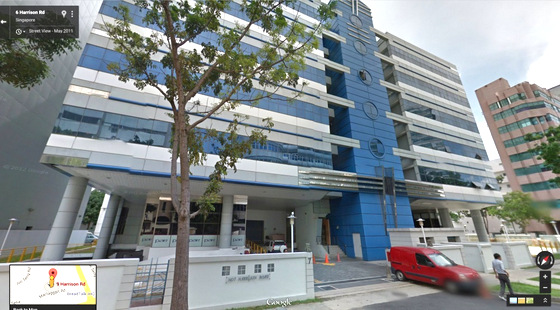What is Powermatic worth?
I primarily think that companies can be valued in two ways: based on cash flows in the future discounted to the present, or based on what a company has. An analogy is a household who has bought a property, car and paid off all its debts with some cash in the bank account. There are two parts to it, the future income stream, of which you can get a good feel based on their previous performance and work history, and what they currently own.
Their equity (total assets – total liabilities) act in the same way the “liquidation value” of a company is. A comment I hear often is that the “value” of these companies can only be realized if they liquidate… but in my experience this is not the case. Very few companies actually undergo liquidation, and there are a variety of ways for “value” to be realised outside of liquidation. Powermatic's investment property @ 7,9, Harrison Road: It is the “Hidden Value” in Powermatic. Photo: Google Maps
Powermatic's investment property @ 7,9, Harrison Road: It is the “Hidden Value” in Powermatic. Photo: Google Maps
Base Value of Powermatic
This is where Powermatic strikes me as being a compelling investment opportunity. Even on a conservative appraisal of their assets, the liquidation value of Powermatic comes close to $40 – $50 million, against a market capitalization at $30+ million. There is no reason for a company of such a track record to trade at such a discount. You could literally buy out Powermatic today at its current price for its investment property – and receive its business and other assets net liabilities for free.
I look at it as buying $1 for 50 cents. The kicker in my view is that it's like buying a REIT – since Powermatic pays a dividend yield of 5.35% at today’s price, and has done so for the last 8 years consistently. Management has a vested interest to keep this payout, with them owning 64% of outstanding shares.
The biggest differentiation with a REIT is that, at this point, Powermatic has not engaged in any borrowings. I pressed the point to management, and suggested they engage in significant share buybacks as one of the resolutions to be passed was a buyback mandate for up to 10% of their outstanding shares. After all, who knows the business best than management themselves… and they are well aware of the gross mismatch between price and value.
Some concluding thoughts:
Howard Marks once said that in investing, take care of the downside and the upside will take care of itself. Powermatic has something which I look for in my investments – an asymmetrical risk reward payout.
The worst case scenario provides an attractive return, and we get a free option on management turning around their business. The consistent 5% + dividend yield makes it all the more compelling.
Time is on my side too, as the value of the freehold property appreciates as the years go by. The current dividend is very much sustainable (costing the company $1.74 million per annum), and management has multiple ways to create value going forward.
Disclosure: The author is long Powermatic.
This article was recently published on The Asia Report, and is republished with permission.






